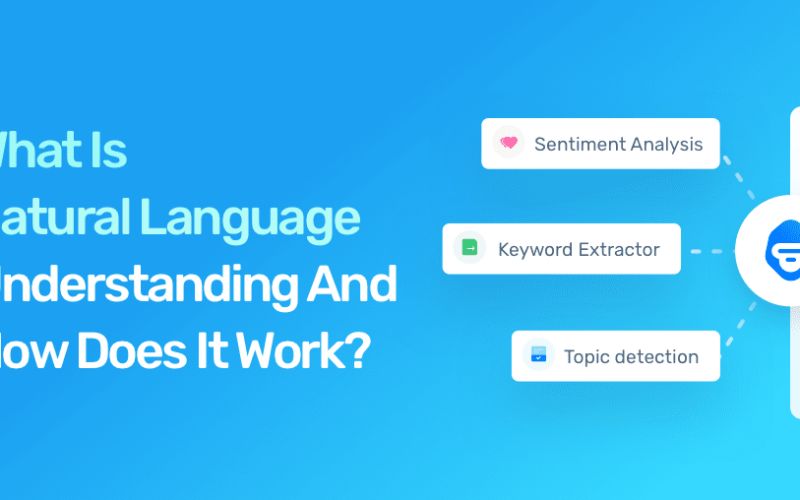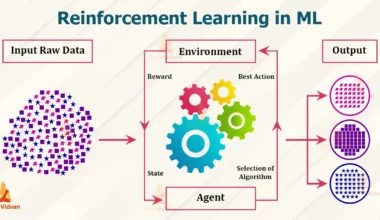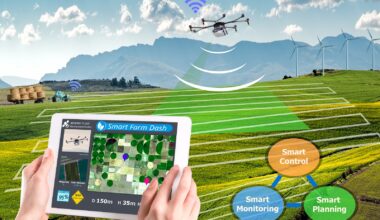Natural language understanding (NLU) is a field of artificial intelligence (AI) that deals with the interaction between computers and human (natural) languages. It is a subfield of natural language processing (NLP), which is the broader study of how computers can process and understand human language.
NLU systems are designed to extract meaning from text or speech. They can be used to perform a variety of tasks, such as
- Sentiment analysis: Determining the emotional tone of a text, such as whether it is positive, negative, or neutral.
- Question answering: Answering questions posed in natural language.
- Machine translation: Translating text from one language to another.
- Chatbots: Providing conversational interfaces with computers.
NLU systems are becoming increasingly important as the amount of human language data available continues to grow. This data includes text from books, articles, websites, social media, and other sources. NLU systems can be used to analyze this data to extract insights that would be difficult or impossible to obtain by manual methods.
There are two main approaches to NLU:
- Rule-based NLU: This approach uses a set of rules to extract meaning from text. The rules are typically handcrafted by experts in linguistics and natural language processing.
- Machine learning NLU: This approach uses machine learning algorithms to learn the patterns of human language. The algorithms are trained on large datasets of text and then used to extract meaning from new text.
Machine learning NLU is becoming increasingly popular because it is more scalable and can be used to handle a wider range of tasks. However, rule-based NLU is still used in some applications, such as those where the meaning of text is highly structured.
The following are some of the key challenges in NLU:
- Ambiguity: Human language is often ambiguous, which can make it difficult for computers to extract meaning. For example, the sentence “I saw a man with a telescope” could mean that the speaker saw a man who was holding a telescope, or that the speaker saw a man through a telescope.
- Variation: Human language varies greatly, both in terms of grammar and vocabulary. This can make it difficult for computers to learn the patterns of human language.
- Noise: Human language often contains noise, such as typos, grammatical errors, and slang. This can make it difficult for computers to extract meaning from text.
Despite these challenges, NLU is a rapidly growing field with a wide range of applications. As the amount of human language data available continues to grow, NLU systems will become increasingly important for extracting insights from this data.
Here are some of the most common NLU tasks:
- Part-of-speech tagging: This task identifies the part of speech of each word in a sentence. For example, the word “saw” in the sentence “I saw a man with a telescope” is a verb.
- Named entity recognition: This task identifies the names of people, places, organizations, and other entities in a text. For example, the sentence “I saw a man with a telescope” contains the named entities “man” and “telescope”.
- Semantic parsing: This task converts natural language text into a formal representation that can be understood by computers. For example, the sentence “I saw a man with a telescope” could be converted into the formal representation “(saw (man (with telescope)))”.
- Sentiment analysis: This task determines the emotional tone of a text. For example, the sentence “I saw a man with a telescope” could be classified as positive, negative, or neutral.
- Question answering: This task answers questions posed in natural language. For example, the question “What did the man see?” could be answered by the sentence “The man saw a telescope”.
NLU is a complex and challenging field, but it is also a rapidly growing field with a wide range of applications. As the amount of human language data available continues to grow, NLU systems will become increasingly important for extracting insights from this data.
Here are some resources for learning more about NLU:
- The Natural Language Processing with Python Book: https://www.nltk.org/book/
- The Stanford NLP Group: https://nlp.stanford.edu/
- The Allen Institute for Artificial Intelligence: https://allenai.org/
- The Google AI Blog: https://ai.googleblog.com/
I hope this comprehensive guide to NLU has been helpful.











